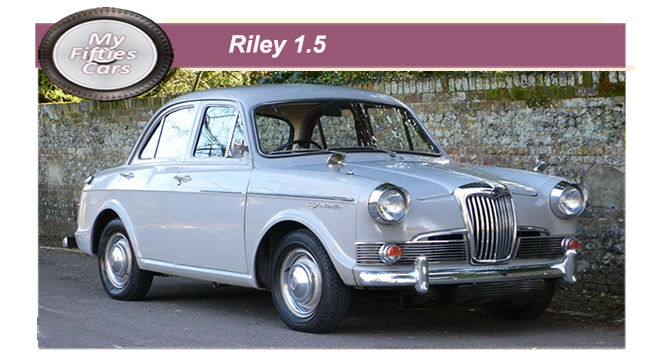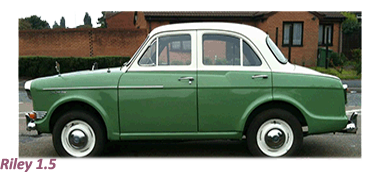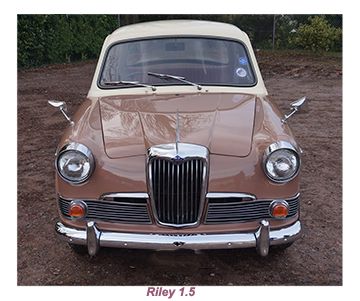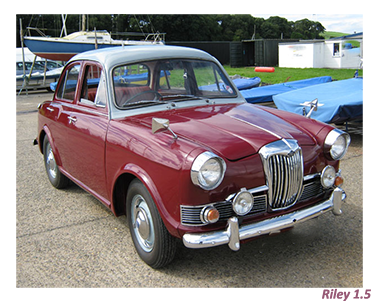
T he Riley 1.5 was designed and constructed to be capable of housing the larger B-series in its 1200cc form. However, just as the car was about to be launched the Suez crisis, BMC's decision to discontinue the Minor was put on hold as demand for smaller economical saloon remained as solid as ever
he Riley 1.5 was designed and constructed to be capable of housing the larger B-series in its 1200cc form. However, just as the car was about to be launched the Suez crisis, BMC's decision to discontinue the Minor was put on hold as demand for smaller economical saloon remained as solid as ever
 nWith considerable development costs already having been run up, the planners at BMC concluded that their development work would not go to waste.
nWith considerable development costs already having been run up, the planners at BMC concluded that their development work would not go to waste.
 Instead, the design team channelled their efforts in the direction of a new project for Riley, under the 1.5-litre label while at the same time providing an opening to introduce a 1500 cc version of the Wolseley, with both cars emerging as more upmarket alternatives to the Morris Minor and the Ford Anglia 100E.
Instead, the design team channelled their efforts in the direction of a new project for Riley, under the 1.5-litre label while at the same time providing an opening to introduce a 1500 cc version of the Wolseley, with both cars emerging as more upmarket alternatives to the Morris Minor and the Ford Anglia 100E.
![]()
 Image-wise the introduction of the 1.5 marked a radical change in direction for Riley, who in their previous format had been known for designing sports saloons of sporting elegance.
Image-wise the introduction of the 1.5 marked a radical change in direction for Riley, who in their previous format had been known for designing sports saloons of sporting elegance.
 The Riley 1,5 was nothing more than a solid a four-door, mid-size family saloon on which awkward curves vied uncomfortably with straight lines.
The Riley 1,5 was nothing more than a solid a four-door, mid-size family saloon on which awkward curves vied uncomfortably with straight lines.
The new Riley 1.5 saloon was fitted with exactly the same engine, suspension and body-pressings as the Wolseley 1500 as well as virtually identical dimensions.

 Power for the 1.5 came from an identical BMC developed series-B power-unit, although fitted with twin car carburettors in place of a single S.U., which provided a much higher compression ratio.
Power for the 1.5 came from an identical BMC developed series-B power-unit, although fitted with twin car carburettors in place of a single S.U., which provided a much higher compression ratio.
Other major differences between the two models released that year were that the Riley had been fitted with a polished walnut facia that incorporated a tachometer as well as a lidded but not lockable glove box for the front-seat passenger.
 To be fair, the Riley 1.5 was successful enough to convince BMC to launch a Mark II version, an almost entirely cosmetic style-tweak that enabled it to be sold in a sporty duo-tone version.
To be fair, the Riley 1.5 was successful enough to convince BMC to launch a Mark II version, an almost entirely cosmetic style-tweak that enabled it to be sold in a sporty duo-tone version.
Despite being launched as something of an afterthought, the Riley 1.5 did itself proud remaining in production until well into the mid-Sixties, during which time close to 40,000 of these mid-range model rolled off the production line.
Ironically, Riley 1.5 ‘s cousin from Wolseley did a lot better with more than 100,000 models produced.


